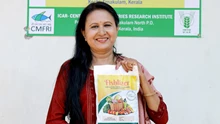
The blend of Artificial Intelligence (AI) and the Internet of Things (IoT) has really changed agriculture. It brings a lot of benefits that help farmers do their work better. One cool thing is precision agriculture, where AI and IoT work together to make farming more efficient. For example, with AI and IoT devices, farmers can check soil conditions, monitor crop health, and track weather in real-time. This helps farmers make smarter choices about how they grow their crops and use resources, leading to better harvests.
Use of AI/ML in Agriculture
The transformative impact of AI and ML is visible in agriculture, from precise yield prediction to early crop disease detection, empowering farmers with smart farming techniques that optimize crop quality and sustainability. Let’s explore it:
1. Yield Prediction:
Several machine learning models were used to support crop yield estimation using remote sensing data. The most applied ML algorithm is Artificial Neural Networks and the deep learning model is Convolutional Neural Networks (CNN). The outperformance of other ML models like Bayesian regularization BP (back propagation) neural network, Support Vector Regression (SVR), Extreme Learning Regression (ELR), Random Forest Regression (RFR), and Partial Least Squares Regression (PLSR) were also observed for estimating the crop yield using UAV and satellite remote sensing data.
Vegetation indices like Red edge, canopy chlorophyll content index, red edge chlorophyll index, chlorophyll absorption ratio index, green normalized difference vegetation index, green spectral band, and chlorophyll vegetation index were among the most suitable variables in predicting crop yield using ML models. Timely prediction of multi-stage crop yield with ML models using a limited number of training data is vital in crop management.
2. Pest and Diseases Detection:
Early detection of crop disease is vital to prevent possible losses in crop yield. The accurate estimation of crop disease requires modern data analysis techniques such as machine learning and deep learning. The Figure shows the important deep learning and machine learning techniques applied to UAV data for identifying crop diseases.
MLR models successfully identify Maize Dwarf Mosaic Virus and wheat Powdery Mildew Disease from Hyperspectral Measurements, Kiwifruit Decline Syndrome from UAV multispectral data, etc. Some of the major deep learning and machine learning models for crop disease identification using UAV datasets. These studies facilitate smart farming allowing farmers to accurately identify the infected crops. This facilitates reduced application of pesticides and chemicals while preserving good crop quality.
3. Weed Detection:
Weeds are considered as a harmful agricultural pest for the crops, which affects their yield and productivity. The ML/DL techniques demonstrated a superior performance in the early identification of weeds in agricultural farms. The RGB images often taken using drones, robots, and digital cameras are processed using DL/ML algorithms for identifying the weeds. In the case of ML, SVM showed better performance with a highest accuracy of 99% compared to other ML algorithms in identifying weeds. The CNN with its variants also showed superior performance with the highest accuracy of 99%. The lowest performance was shown by VGGNet.

4. Soil Health Management:
Digital soil mapping and smart prediction of soil nutrients are important for maintaining healthy soil to achieve sustainable food production. Now ML has become an intelligent prediction system for soil nutrients. On a comparative review of different MLs, it was observed that random forest (RF) and deep learning outperformed other conventional ML models for predicting soil nutrients.
5. Crop Quality Management:
Sensing technologies and ML models play a vital role in managing the quality of the crops by assessing N and chlorophyll status in plants. In contrast to the last decades where the simple parametric regression algorithms with narrowband vegetation indices were used, an increasing trend was observed in machine learning and its hybrid version by integrating radiative transfer models.
Moreover, the role of leaf protein content in estimating N status using the SWIR spectral region of hyperspectral data was also explored using hybrid physical-based models. Major crop traits such as leaf area index (LAI), leaf chlorophyll content (LCC), and canopy chlorophyll content (CCC) are also important for monitoring crop quality. Recent trend in using hybrid models, mainly coupling the radiative transfer model with Gaussian process regression demonstrated a fast and accurate retrieval of these parameters.
6. Smart Irrigation:
A layer of machine learning-based irrigation architecture was proposed, where data from multiple sources like UAV and satellite-captured data, soil and weather information was stored in a cloud server integrated with an ML model to make, predictions, decisions, and recommendations on scheduling smart irrigations. To achieve precise and smart management of irrigation practices in fields, recommend the use of machine learning models such as supervised learning, unsupervised learning, reinforcement learning, and federated learning models.
7. Livestock Management:
Livestock management involves critical disease detection, vaccination, production management, tracking, and health monitoring. Based on a comprehensive review conducted, the most used ML models for cattle identification were support vector machine (SVM), k-nearest neighbor (KNN), and artificial neural network (ANN). Based on evaluation metrics, SVM, KNN, ANN, and quadratic discriminant analysis (QDA) shows the highest accuracy of more than 99% in cattle identification. The cattle identification with more than 99% accuracy was also achieved using DL models like ResNet, Inception, DenseNet, and the neural architecture search network (NasNet).
Overall, AI and ML are empowering farmers to make more better informed decisions and achieve improved outcomes on their farms, resulting in significant improvements to farming practices.
(Information taken from ICAR Report 2024 on Revolutionizing Agriculture: The Digital Transformation of Farming)











